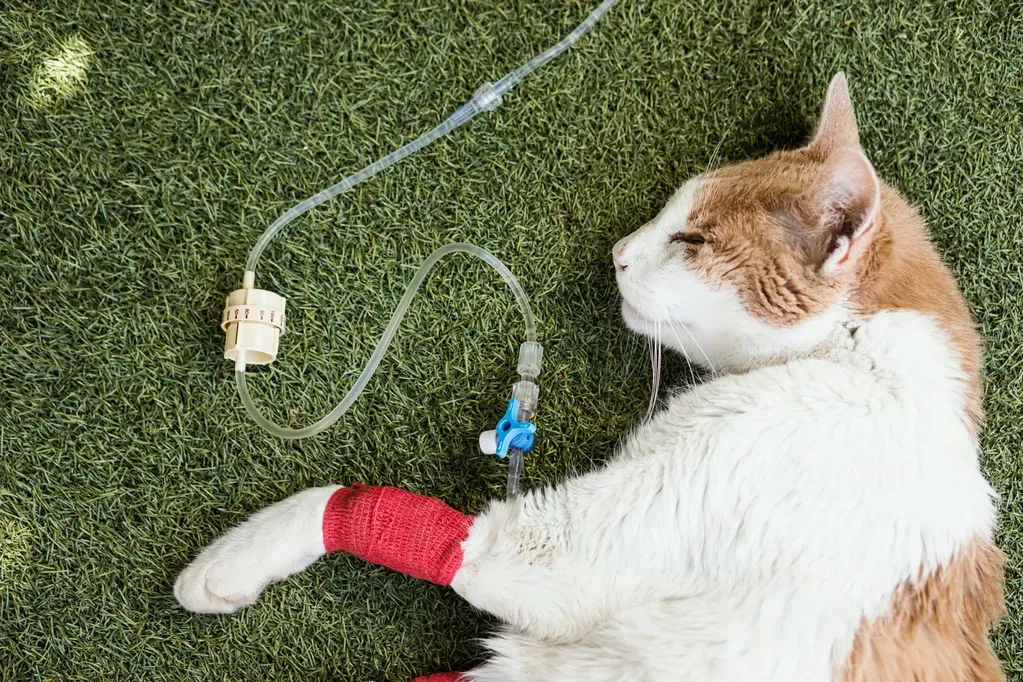How Long Can a Cat Live with Kidney Disease? Understanding the Prognosis and Care Options
If you’re a cat owner whose feline friend has recently been diagnosed with kidney disease, one of the most pressing questions on your mind is: how long can a cat live with kidney disease? Chronic kidney disease (CKD) is a common condition in aging cats, and while it can be serious, advances in veterinary medicine and proper management can significantly improve your cat’s quality of life.
In this detailed guide, we’ll explore everything you need to know about feline kidney disease—including prognosis, lifespan expectations, early signs, treatment options, and how you can help your cat live comfortably for as long as possible. Whether your kitty has just been diagnosed or you are seeking more information on managing the condition, this article provides trustworthy insights to help you make informed decisions and provide the best care for your beloved pet.
Understanding Kidney Disease in Cats
How long can a cat live with kidney disease? The answer depends on multiple factors including the stage of the disease, the severity of symptoms, age, overall health, and how well the disease is managed. To understand prognosis, we first need to grasp what kidney disease in cats entails.
What Is Feline Kidney Disease?
Kidney disease, medically known as chronic kidney disease (CKD) or chronic renal failure, occurs when the kidneys gradually lose their ability to function properly. The kidneys are vital organs responsible for filtering waste products from the blood, maintaining fluid and electrolyte balance, and producing hormones that regulate blood pressure and red blood cell production.
The disease can be classified as either:
- Acute Kidney Injury (AKI):Sudden loss of kidney function, potentially reversible with prompt treatment.
- Chronic Kidney Disease (CKD):Long-term, progressive decline in kidney function, more common in senior cats.
Most cases diagnosed in cats are of the chronic type, and the progression of CKD can vary widely based on various factors.
How Does Kidney Disease Progress?
The damage to the kidneys reduces their ability to regulate fluids and electrolytes, leading to symptoms like increased thirst and urination, weight loss, decreased appetite, vomiting, and poor coat condition.
The progression occurs in stages, from mild to severe, and timely intervention can slow or sometimes halt further deterioration. It’s crucial for pet owners to understand that early diagnosis and targeted care can extend survival and improve quality of life significantly.
Factors Influencing a Cat’s Lifespan with Kidney Disease
The question “how long can a cat live with kidney disease?” doesn’t have a fixed answer because of the numerous influencing factors. Here’s what affects the prognosis:
1. Stage of Kidney Disease at Diagnosis
Early detection is key. Cats diagnosed at stage 1 or 2 (mild or moderate disease) tend to have a longer lifespan than those diagnosed at later stages. An early diagnosis can mean several years of manageable health and comfort, making it essential for owners to schedule regular veterinary check-ups, especially for senior cats, and pay attention to subtle signs of illness.
2. Age of the Cat
Younger cats with kidney disease often have a better chance of living longer, especially with aggressive management. Older cats with advanced disease may have a shorter lifespan, but appropriate supportive care can still dramatically improve their quality of life.
3. Disease Progression Rate
Some cats experience rapid decline, while others have a slow, steady progression that allows for longer survival. Regular monitoring via blood work helps veterinarians tailor treatments precisely and catch any worsening early.
4. Overall Health and Presence of Comorbidities
Conditions like hyperthyroidism, diabetes, or cardiovascular issues can influence survival negatively. A healthy immune system, good nutritional status, and absence of concurrent diseases support better outcomes.
5. Response to Treatment
Cats that respond well to diet, medications, and supportive care are more likely to live longer and enjoy a better quality of life. Consistent adherence to treatment plans is crucial.
6. Owner Commitment and Home Care
The effort invested in administering medications, special diets, and regular veterinary visits directly affects the overall prognosis. Owners who are diligent and attentive can extend their cat’s lifespan significantly.
How Long Can a Cat Live with Kidney Disease? Expected Lifespan
The answer to “how long can a cat live with kidney disease?” varies widely depending on many factors. Here’s a comprehensive overview based on the disease stages:
Stage 1 (Likely Reversible or Early)
- Lifespan:Many cats can live several years—often 3 to 4 years or more—if diagnosed early and managed properly.
- Notes:Stage 1 is often asymptomatic, and recent advances in diagnostics permit early detection through blood tests and urinalysis. Regular veterinary visits and blood testing every 6 to 12 months are recommended for senior cats.
Stage 2 (Mild to Moderate)
- Notes:Many cats with stage 2 CKD can maintain a good quality of life with diet modification, medication, and regular monitoring.
Stage 3 (Severe)
- Lifespan:Typically 6 months to 2 years.
- Notes:As kidney function declines significantly, cats may experience more severe symptoms, but supportive care including fluid therapy and appetite stimulants can help them live more comfortably.
Stage 4 (End-Stage Kidney Failure)
- Lifespan:Often only weeks to a few months without aggressive intervention.
- Notes:Cats in end-stage CKD generally require intensive supportive care; euthanasia may be considered when quality of life declines. Palliative care and comfort are priorities.
Summary Table
| Stage | Approximate Duration | Key Points |
| Stage 1 | Several years | Early detection, good prognosis with treatment |
| Stage 2 | 2-3 years | Manageable with proper care, diet, and monitoring |
| Stage 3 | 6 months to 2 years | Significant decline but potential for longer comfort with management |
Note: These figures are approximate; individual outcomes depend on various factors, including early intervention and the overall health of the cat.
Recognizing the Signs and Symptoms of Kidney Disease in Cats
Early recognition of signs can lead to earlier treatment and better outcomes. Symptoms can be subtle at first, especially in early stages, so vigilance is essential. Common indicators include:
- Increased thirst (polydipsia)
- Increased urination (polyuria)
- Loss of appetite
- Weight loss
- Vomiting
- Lethargy
- Poor coat condition and dullness
- Bad breath (uremic odor)
- Mouth ulcers (indicating calcium and other mineral imbalances)
- Dehydration (dry gums, sunken eyes)
Increased vigilance is especially critical for senior cats or those with a history of health issues.
Diagnosis and Monitoring
Proper diagnosis involves blood tests—assessing creatinine and BUN levels—and urinalysis to evaluate urine concentration and detect protein or mineral imbalances. Imaging studies like ultrasound or X-rays help visualize kidney size, structure, and presence of any abnormalities like cysts or tumors.
Monitoring involves frequent check-ups, blood pressure measurement (hypertensive kidney disease is common), and lab tests every 3-6 months once diagnosed. Keeping detailed records helps veterinarians track the progression and fine-tune treatment plans.
Management Strategies to Extend Quality and Quantity of Life
While there’s no cure for chronic kidney disease, management can greatly improve your cat’s lifespan and comfort. Here are essential strategies for doing so:
1. Specialized Diet
Veterinary renal diets are formulated with reduced protein, phosphorus, and sodium—aiming to slow disease progression and manage clinical signs. Some cats might refuse the diet initially, but patience and gentle acclimation are vital.
2. Fluid Therapy
Subcutaneous fluids have revolutionized feline CKD management, helping hydrate the kidneys, dilute toxins, and alleviate dehydration-related symptoms. Regular administration at home can extend lifespan significantly, especially in more advanced stages.
3. Medications
- Phosphate binders to prevent mineral buildup.
- Antiemetics for nausea, improving appetite and comfort.
- Blood pressure medication if hypertension occurs.
- Potassium supplements if levels are low, supporting muscle and nerve function.
4. Supplements and Supportive Care
Omega-3 fatty acids, antioxidants, and probiotics may support kidney health and overall well-being. These supplements can protect remaining kidney function and reduce inflammation.
5. Regular Veterinary Care
Frequent check-ups, blood tests, and health monitoring are essential to detect any changes promptly and adjust treatment accordingly. Owners should maintain a good line of communication with their veterinarian.
Home Care: Making Your Cat Comfortable
Providing emotional support and comfort can help improve your cat’s quality of life, especially in advanced stages. Ensure they have:
- Easy access to fresh water at all times.
- Easy-to-eat, palatable food designed for kidney health.
- Soft bedding in a quiet, low-stress environment.
- Regular grooming to maintain coat health.
- Low-stress routines and a safe space where your cat feels secure.
Creating a stress-free environment can also help reduce blood pressure and overall discomfort, supporting longevity.
When to Consider Euthanasia
Deciding when to humanely end your cat’s suffering is one of the hardest choices for pet owners. Signs that indicate it might be time include:
- Unrelenting pain or distress despite treatment.
- Persistent vomiting and diarrhea leading to dehydration.
- Severe dehydration and decline in vital functions.
- Complete inability to eat or drink.
- Lethargy, depression, or withdrawal from affection.
Consult your veterinarian for guidance, and prioritize your pet’s comfort and dignity.
Long-Term Outlook and Living with Kidney Disease
It’s important for owners to maintain realistic expectations but also to focus on quality of life. Your care, love, and vigilance can make a significant difference in how your cat endures their journey.
A supportive and proactive approach, combined with regular veterinary check-ups, can help ensure your feline friend remains happy and comfortable for as long as possible. Remember, each case is unique, and personalized veterinary advice is essential.
Conclusion: How Long Can a Cat Live with Kidney Disease?
How long can a cat live with kidney disease? The prognosis varies widely depending on disease stage, availability of early diagnosis, treatment response, and overall health.However, advanced stages tend to limit survival to months or less, underscoring the importance of early detection and ongoing care.
The key to extending your cat’s lifespan is early intervention, consistent treatment, and attentive home care. Your veterinarian is your best partner in creating a tailored plan that prioritizes comfort, nutrition, and medical support—helping your cat enjoy the remaining days with dignity and love.
If you’re concerned about your cat’s health, don’t hesitate to consult your veterinarian for personalized guidance and support.




